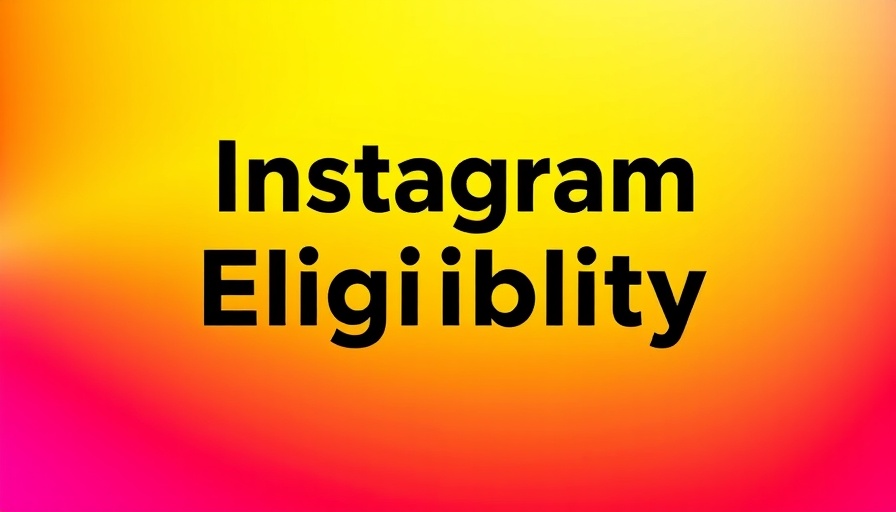
Meta’s Commitment to Ad Safety: A Boon for Advertisers
In a significant development for businesses utilizing social media for advertising, Meta has announced its re-accreditation by the Media Ratings Council (MRC) for Content-Level Brand Safety. This accolade signifies that Meta's practices adhere to MRC standards, allowing brand partners to navigate the complexities of online advertising with greater assurance.
The Role of MRC in Ensuring Brand Safety
The MRC plays a vital role in auditing advertising systems, ensuring that measurement processes satisfy stringent industry benchmarks. Their endorsement not only serves as a seal of approval but also as a trust signal for companies opting to invest in Facebook and Instagram ads. According to the MRC, the accreditation reflects Meta's alignment with the Minimum Standards for Media Rating Research, underscoring the credibility of the rating statistics that advertisers rely on.
Understanding Limitations: Misinformation Exclusion
Interestingly, this recent evaluation highlighted a notable exclusion: misinformation. The MRC has explicitly stated that the accreditation does not cover misinformation's prevalence—a vital aspect that advertisers should consider. While Meta’s shift towards a more lenient approach to content enforcement may allow for greater freedom of expression on the platforms, it also raises potential concerns for ad partners. How will this affect brand perception when their ads are seen alongside questionable content?
Increased Third-Party Verification: A Safety Net?
Alongside the MRC accreditation, Meta has also achieved brand safety re-certification from the Trustworthy Accountability Group (TAG) for six consecutive years. This achievement, paired with the new contextual reporting features from Integral Ad Science, signifies a comprehensive strategy upgrade to enhance measurement reporting across Meta's suite of platforms, including Facebook and Instagram. These advancements raise an interesting question: are advertisers now in a safer space, or do the benefits come with caveats?
Future Predictions: What’s Next for Meta Advertising?
The landscape of social media advertising is continually evolving. With Meta's latest compliance gains, advertisers may feel emboldened—a sentiment not without nuance. Companies will need to navigate these waters carefully, particularly as the dialogue surrounding misinformation continues to unfold. Businesses will find that understanding the implications of these developments is crucial in shaping their advertising strategies moving forward.
Actionable Insights for Advertisers in Today’s Landscape
In light of these developments, businesses should consider reassessing their advertising strategies on social media platforms. Here are some practical tips:
- Conduct regular audits of your ad placements to ensure alignment with safety standards.
- Stay updated on Meta's evolving content policies and how they may impact your campaigns.
- Engage in continuous dialogue with your target audience to monitor perceptions, especially regarding your brand’s association with user-generated content.
Conclusion: Meta's Evolving Landscape
As Meta continues to adapt its advertising environment, brands must be proactive rather than reactive. Embracing transparency and compliance not only aids in building trust with audiences but also ensures a sustainable advertising approach. As the landscape shifts, so too should the strategies employed to promote services and products. Exploring different marketing avenues—such as engaging with your audience through unique content rather than traditional ads—could yield unforeseen opportunities for businesses.
 Add Row
Add Row  Add
Add 




Write A Comment